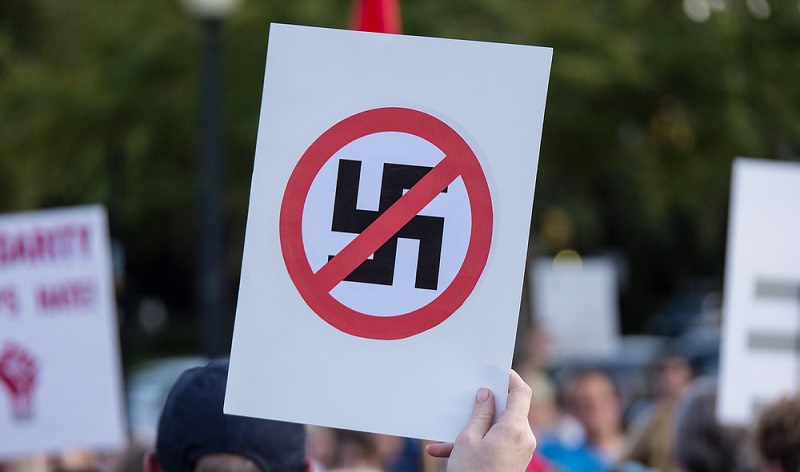
Violence by white supremacists presents a far more insidious policy problem than other forms of violent extremism. White supremacists find their intellectual, psychological, emotional and social bearings in a complex and sustaining ideological, cultural and political ecosystem. The violent ones exist at one extremity of a continuum of loosely connected and overlapping, but discrete, world views that are essentially transatlantic in origin.
Policing and incarceration of violent perpetrators deals only with the end product, the surface symptom. There exists a deep well of information and support in the public sphere into which new recruits to the white supremacist’s world view can dip for diverse but supportive meta-narratives.
Without conspiracies, the supremacist’s real or imagined marginalisation and loss of prestige, power and economic dominance seems otherwise inexplicable. While economic and technological change might foster social disorientation and dislocation, it is a sense of crisis and loss found in a wider intellectual milieu that validates white supremacist violence.
There is a facade of respectability and ostensible scholarly credentials to much supremacist print and online literature. However, some also draws on the mythic, arcane and occult, or the simply bizarre and lunatic, or is religiously based. John Pollard observes that since the 1990s ‘the strongest religious tendency among neo-fascists and neo-Nazis seems to be a resurgence of interest in paganism, Odinism and now Satanism’.
The actions, statements and writings of some influential figures are coded, or perceived as coded, support for supremacist conspiracy theories. Others, like Henry Ford’s The international Jew: the world’s foremost problem, are explicitly racist. Sources that are genuine in themselves and yet unintentionally provide a frame of reference are the most intractable challenge. Racist, anti-Semitic and supremacist conspiracy theories can fester in their shadow. Alarm over the decline of white European civilisation fertilises the fanatic.
Disputants in the so-called culture wars are not necessarily white supremacists or racists. The Institute for the Study of Western Civilization in California and Australia’s Ramsay Centre for Western Civilisation venerate a predominantly white European canon from which conservatives draw and validate their social and political convictions. Yet such respectable academic exercises resonate with the pseudo-historical books like Houston Stewart Chamberlain’s Foundations of the nineteenth century and Francis Parker Yockey’s Imperium which have become a foundational works in the white supremacist corpus.
The Aryan fantasies of the National Socialists did not disappear with the end of the war, but instead were reinvented and in a new formulation nourished the growth of racist, supremacist and anti-Semitic movements. The post-war rallying cry for white supremacists found a comfortable home with those who sounded the tocsin over the threats to Western civilisation and culture. The fear of the decline of the West has created a permissive atmosphere where the problem is shared but the analysis of the causes diverge dramatically.
For some conservatives it is the idea of cultural Marxism which combines inchoate anti-Semitic feelings and putative threats to Judeo-Christian values. The Anders Breivik case demonstrates this. American archconservative William S. Lind, in his 2004 book Political correctness: a short history of an ideology, blames cultural Marxism for the erosion of traditional mores and moral norms, sexual permissiveness and degeneracy, and irreligiosity. The book depicts the work of the Frankfurt School as ‘a grand scheme intended to deny the intrinsic worth of white, heterosexual males’ and whose ‘purpose is to destroy the hegemony of white males’. Lind’s book is a call to action for nascent white supremacists.
White supremacists are connected across the globe. Australia’s virulently anti-Semitic Antipodean Resistance takes its inspiration from overseas sources, including American neo-Nazi writings. Such groups are already a serious domestic criminal and security problem in Europe and the US and will likely increasingly become so in Australia.
The radicalisation of white supremacists is complicated not just by the difficulty of supressing radical, conspiratorial, supremacist literature. The ease with which propagandists can interleave and conflate their irrational theories with reasonable community concerns and respectable academic and political positions allows them to leverage off legitimate concerns about immigration, multiculturalism and assimilation, and exploit unease about changing values around social issues like gender, religion and patriotism.
Jihadist violence emerges from a clearer environment. An extreme and identifiable, although marginal, religious ideology provides a background against which violent Islamic extremists can be identified; yet that doesn’t prevent politicians from holding the whole Muslim community responsible for their violence. Politicians and policymakers, however, seem baffled by the lack of a cohesive narrative to account for the persistence and growth of white supremacists.
Members of the wider community who harbour concerns about immigration don’t necessarily share supremacist views on gender issues, multiculturalism, anti-Semitism, Islamophobia, secularisation, identity politics and globalisation, or fears about the deep state and political elites. Yet each mainstream discussion of these issues contains within it elements that can be twisted and misconstrued into a form that white supremacists can draw from.
The motivating sense of loss of the white supremacist is not something that the policies of a liberal, democratic, rule-of-law polity based on principles of equality and non-discrimination can rectify. For many supremacists these are the factors responsible for their loss and are portrayed as the moral and racial decline of white Western culture. The prized freedoms of expression and religion, and the rights to debate and electioneer, and to hold and promulgate controversial social or cultural theories, cannot be curtailed without damaging liberal democracies.
This both restricts the capacity to dry up sources of radicalisation and ensures the supremacists always have a target for their conspiracies. The progress made to date on addressing racism, nativism, anti-Semitism, antifeminism and homophobia cannot be reversed, and that in itself further bolsters the white male supremacists’ view of themselves as an ‘oppressed majority’.
The authorising environment for violent supremacists is not in the dark recesses of the web but in the visible sinews of democratic society. Call them white nationalists, alt-right extremists, neo-Nazis or white supremacists; they seem to be here to stay.

